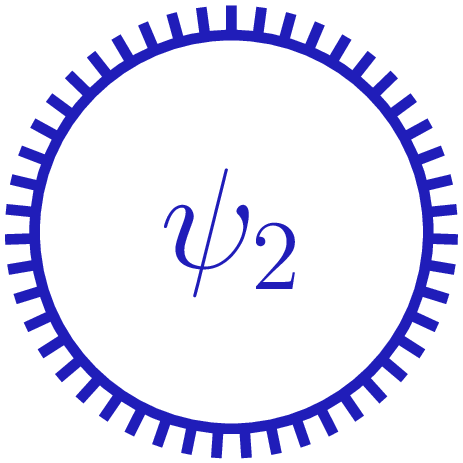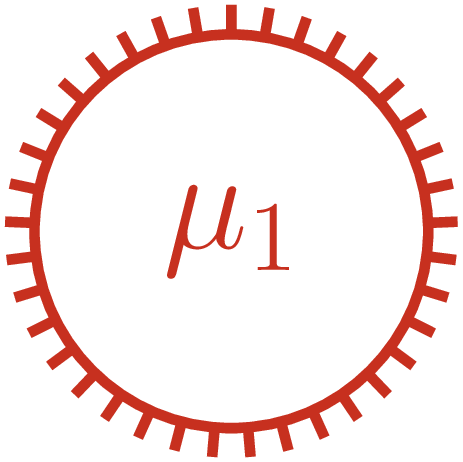Illustrating the cipher wheels of a Lorenz machine
Yesterday I found a set of old illustrations I’d made for the wheels of a Lorenz cipher machine, which was a machine used by the German Army during World War II.
The machine had twelve wheels, which were combined to form a 5-bit key. Each wheel had a number of switches around its rim (called “cams”), which could be set in an “on” or “off” position. Here’s a close-up photo of two of the wheels:

Each wheel had a different number of switches, and those numbers were coprime (they had no common factors). Between the switch settings and the starting positions of the wheels, this meant there were a dizzying number of possible setups – and the Germans believed this made it an unbreakable cipher. They trusted it with their most important messages.
Unfortunately for them, an operator made a mistake, and this let British codebreaker Bill Tutte find a weakness in the cipher. He helped Bletchey Park develop a system to read these top secret messages. His analysis grouped the wheels into three sets, based on how they were used in the machine: psi/ψ, chi/χ, and mu/μ.
I made some illustrations that show the wheels as coloured circles, with tick marks to represent the number of switches:



I meant to use them in a presentation about Lorenz and the British break of the cipher, but it never happened. They languished on a disk for years, until I found them yesterday.
They’re drawn using polar coordinates in TikZ, a graphics library for LaTeK. I’ve put the code and instructions for compiling the diagrams in a GitHub repository, in case you’d like to draw similar diagrams yourself.
Alternatively, if you want to read more about the Lorenz cipher, there are some pages written by the late Tony Sale that explain how the cipher works, and how it was cracked. He also talks about Colossus, a codebreaking computer used to read Lorenz messages, which was kept secret for nearly thirty years after the war – and which he helped to rebuild in the early 2000s.